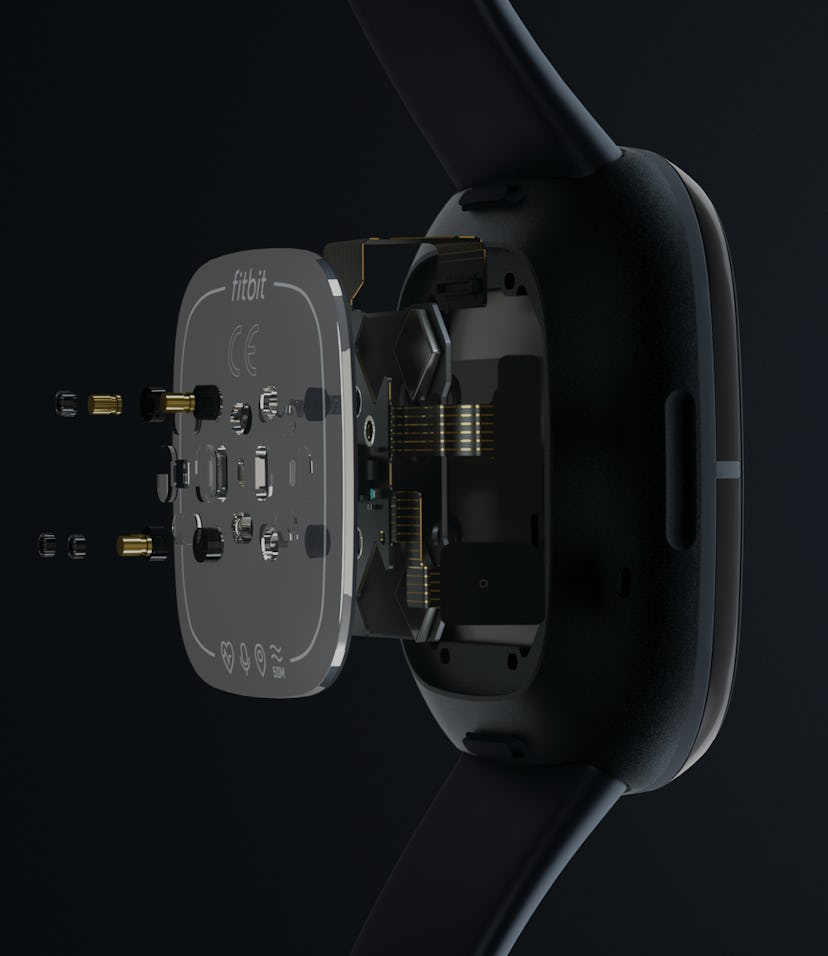Tech
Fitbit's Sense smartwatch has 2 features the Apple Watch should steal
Can the Apple Watch track stress and skin temperature? You wish!

Google may own Fitbit now, but the wearables company hasn’t been fully absorbed by the tech giant just yet. Fitbit has just announced three new wearables: the Sense and Versa 3 smartwatches, and Inspire 2 fitness tracker.
All three wearables are available this fall ($330 for the Sense, $230 for the Versa 3, and $100 for the Inspire 2) and put a greater emphasis on health tracking as opposed to just fitness tracking. Fitbit says the pivot from fitness to health tracking will allow users to be better informed about their physical and mental wellness, both of which are more valuable as we all live with COVID-19.
While the Apple Watch already differentiates itself as an "intelligent guardian of your health" (the gadget that is helping me survive this pandemic), the Fitbit Sense has a few unique features that the Apple Watch doesn’t like stress management and temperature tracking.
Stress manager — First up is an EDA Scan app, which Fitbit says measures electrodermal activity. Users can place their palm on the faces of the screen and then breathe. It then produces a score that factors in data from your heart, sleep, and activity levels. A high score means you have less stress and a low score means you have more stress.
Just like the Apple Watch, the Sense is not being marketed as a replacement for a doctor or medical advisor. The stress management features are designed to help users be more conscious of their health using data. At the end of the day, it’s up to users to be proactive in communicating with their healthcare provider.
Temperature tracking — As we all are more aware than before, changes in our body temperature can be a way to detect early sickness or health issues. Fitbit says the Sense has an upgraded PurePulse 2.0 heart rate monitor that is able to constantly check your skin temperature. Fitbit says constantly taking your skin’s temperature provides a better picture of your body’s internal changes over time versus taking a temperature check every once in a while.
More heart data — Fitbit launched a massive study on Atrial fibrillation aka AFib earlier this year and said it was working on an ECG app and heart rate notifications. Apple introduced both of these features on the Apple Watch in 2019 and now the Sense is getting them.
The rest of the goodies — Other notable features on the Sense include over 6 days of battery life on a single charge, Google Assistant support (in addition to Alexa), sleep tracking, built-in GPS, and the usual smartphone notifications, text messaging and call hand-offs Fitbit already had in its pasts smartwatches. The Sense also comes with a free 6-month trial to Fitbit Premium.
Versa 3 and Inspire 2
Fitbit also announced the Versa 3 and Inspire 2. Both devices are less interesting than the Sense, but they do add some extra bells and whistles that their predecessors didn’t have.
The $230 Versa 3 isn’t replacing the Versa 2 (it’ll stick around at $180). It does everything the Versa 2 does, which includes activity tracking, 24/7 heart rate tracking, sleep tracking, music, and more. New is a built-in GPS, Google Assistant support (Versa 2 only supports Alexa), fast charging, Bluetooth calling, and a new “infinity band” that is strikingly similar to the Apple Watch’s sport band.
If all of this is worth an extra $50, then you’re going to love the Versa 3. And, of course, it comes with the new infinity band in different colors, and there are new band collaborations.
As for the Inspire 2, the price is the same ($100), but the battery has doubled from about five days on a single charge to 10 days. Otherwise, you’re still getting the same hassle-free design, activity tracking, sleep tracking, 24/7 heart rate monitor, and pared-down smartphone notifications and limited quick replies (Android only).
Good, but where’s the Google smartwatch? — I was hoping Fitbit’s new smartwatches would be a bit more Google-y. Adding the Google Assistant is a baby step. But it’s probably too soon for Google’s purchase of Fitbit to bear fruit in a product yet. This time next year could be different. If Google leverages Fitbit’s technologies and experience, a Pixel-branded smartwatch of some sort that competes with the Apple Watch could be on the horizon. And that’s what I’m waiting for because Wear OS is a sad and forgotten smartwatch platform that could use some serious rejuvenation.